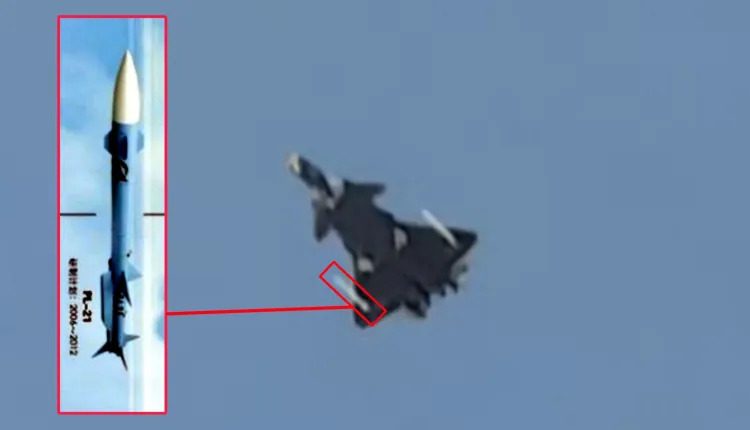The PL-21 is built to strike high-value targets such as AWACS planes and refueling aircraft from more than 400 kilometers away. This new development is raising interest in Pakistan, where plans are underway to receive the new J-35A stealth fighters. If Pakistan is allowed to use the PL-21, it could change the balance of air power in the region.
The image, which appears to show the advanced PL-21 missile under the wing of China’s top stealth fighter, shows that the Chinese military is testing a very powerful new weapon. Even though there is no official confirmation from China, military analysts say the picture offers a clear hint that the People’s Liberation Army Air Force is running advanced missile trials.
The PL-21 is designed to hit support aircraft like AWACS, tankers, and surveillance planes at extreme distances, which could allow the missile’s user to attack without entering enemy airspace. “PL-21: China’s Deadliest AAM May Soon Arm Pakistan’s J-35A,” experts say. They believe the weapon could soon become part of Pakistan’s growing air defense arsenal.

Pakistan is expected to receive the first batch of J-35A fifth-generation stealth jets from China as early as next year. With this in mind, many believe Pakistan may also get access to the PL-21 missile. This would follow the earlier transfer of PL-15 missiles, which were added to Pakistan’s J-10C fighter jets.
Defense experts say the PL-15 has already shown good results, and adding the PL-21 to the new J-35A could give the country a serious advantage. With a range of over 400 kilometers, Pakistan would be able to strike Indian airborne systems from a safe distance. This would weaken India’s air command and reduce the threat during combat operations.
Under the current agreement, Pakistan is supposed to receive 40 J-35A fighters by the end of 2026. However, some reports suggest the timeline may be moved up due to urgent defense cooperation between China and Pakistan.
The PL-21 missile is packed with high-tech features. It is likely powered by a ramjet or scramjet engine, allowing it to fly fast over long distances. It is larger than most air-to-air missiles and has a special AESA radar seeker, which helps it lock onto targets.
The missile also has advanced anti-jamming technology and an encrypted two-way link that lets it receive updates during flight. These features make it very difficult to stop once launched.
It is designed to take down important airborne command aircraft from far away. This would be useful in areas like the South China Sea or near Taiwan, where long-range engagement is critical. Countries like Japan, South Korea, and Australia may have to change their strategies if China fully deploys this missile.
If Pakistan becomes the first foreign user of the missile, it would act as a real-world test platform, just like it did with the PL-15. This helps China get real data, improve future weapons, and attract more buyers. Countries in the Middle East, such as Iran and Egypt, could be interested in buying a missile that lets them challenge Western air power without expensive jets.











